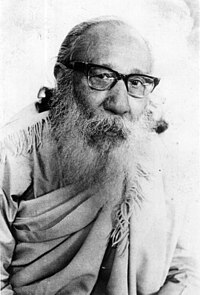
Newar or Newari, known officially in Nepal as Nepal Bhasa, is a Sino-Tibetan language spoken by the Newar people, the indigenous inhabitants of Nepal Mandala, which consists of the Kathmandu Valley and surrounding regions in Nepal.

Newar or Nepami, are the historical inhabitants of the Kathmandu Valley and its surrounding areas in Nepal and the creators of its historic heritage and civilisation. Newars form a linguistic and cultural community of primarily Indo-Aryan and Tibeto-Burman ethnicities following Hinduism and Buddhism with Nepal Bhasa as their common language. Newars have developed a division of labour and a sophisticated urban civilisation not seen elsewhere in the Himalayan foothills. Newars have continued their age-old traditions and practices and pride themselves as the true custodians of the religion, culture and civilisation of Nepal. Newars are known for their contributions to culture, art and literature, trade, agriculture and cuisine. Today, they consistently rank as the most economically and socially advanced community in Nepal, according to the annual Human Development Index published by UNDP. Newars are ranked the 8th largest ethnic group in Nepal according to the 2021 Nepal census numbering 1,341,363 people constituting 4.6% of the total population.

Siddhicharan Shrestha was one of the most prominent writers of Nepal. He contributed to the struggle against the autocratic Rana regime (1846–1951) through his writings. His revolutionary poetry aroused freedom fighters, and he was sentenced to 18 years in jail for his literary activities. He wrote in Nepal Bhasa and Nepali.

The Newar language of Nepal has the fourth oldest literature tradition among the Sino-Tibetan languages.
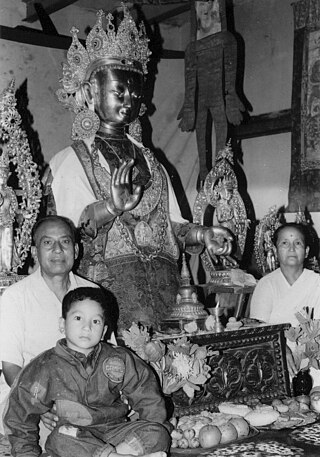
Tulādhar is a Nepali/Nepalese caste from the Newar community of the Kathmandu Valley in Nepal. The name Tuladhar is derived from the Sanskrit words "tula" and "dhar" (possessor), thus meaning scale-bearer or in general, merchant. Tuladhars belong to the Uray group which includes Kansakar, Tamrakar, Sthapit, Bania, Sindurakar, Selalik and other castes. They follow Newar Buddhism and speak Nepal Bhasa as a mother tongue.

Nepal Bhasa movement refers to the struggle for linguistic rights by Newar speakers in Nepal in the face of opposition from the government and hostile neighbors. The campaign aims to increase the use of Nepal Bhasa in the home, education, government and business. Despite a high level of development, Newar culture and language are both under threat.

Nepal Bhasa renaissance was the movement to revive and modernize the Nepal Bhasa language during the period 1909 to 1941. The movement was spontaneous and not orchestrated. However, the sum total of activities conducted during this era had a profound impact on the overall course of the language development.

Dharma Ratna Tuladhar, popularly known as Dharma Ratna Yami was a Nepalese government deputy minister, activist and Newa language writer
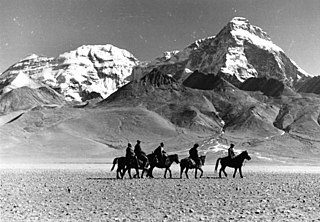
Lhasa Newar refers to the expatriate Newar traders and artisans who traveled between the Kathmandu Valley and Tibet from centuries ago. These Nepalese merchants conducted trade between Nepal, Tibet and Bengal, India over the Silk Road, and acted as a bridge for economic and cultural exchanges between South Asia and Central Asia.
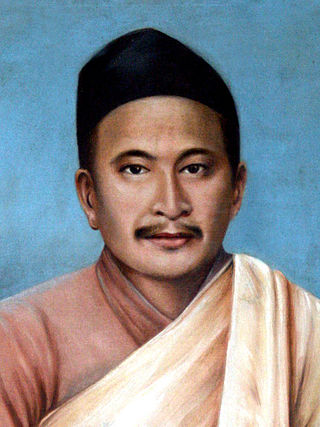
Nisthananda Bajracharya was a Nepalese writer who marked a turning point in Nepal Bhasa literature by breaking away from the classical style and writing prose in colloquial language. He was one of the leaders of the Nepal Bhasa renaissance, and also a pioneer of printing with moveable type in Nepal. He is honored as one of the Four Pillars of Nepal Bhasa.

Yogbir Singh Kansakar was a Nepalese poet, social reformer and one of the Four Pillars of Nepal Bhasa. He worked to develop his mother tongue and promote Arya Samaj sect of Hinduism and Buddhism in the face of repression by the Rana rulers.

Nepal Bhasa journalism began in 1925 with the publication of the magazine Buddha Dharma wa Nepal Bhasa. It was the first magazine to be published in Nepal Bhasa. It was published from Kolkata, India by Dharmaditya Dharmacharya.
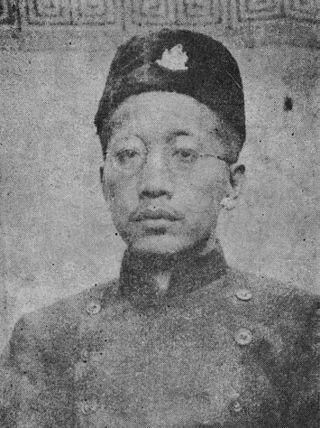
Dharmaditya Dharmacharya (1902–1963) was a Nepalese author, Buddhist scholar and language activist. He worked to develop Nepal Bhasa and revive Theravada Buddhism when Nepal was ruled by the Rana dynasty and both were dangerous activities, and was consequently jailed.

Moti Laxmi Upasika was Nepal's first woman poet and short story writer of modern times. Her first work, a short story, was published in 1935.

Girija Prasad Joshi was a versatile Nepalese poet who set a new trend in Nepal Bhasa literature. His poems, epics, plays and novels broke tradition and crossed conventional boundaries. He has been honored with the title Great Poet.

Mandas Tuladhar (1900-1975) was a Nepalese Buddhist scholar, Nepal Bhasa activist and pioneer publisher. He collected and published ancient hymns and folk songs which is his finest contribution to the preservation of Nepalese cultural heritage.

Phatte Bahadur Singh (1902–1983) was a Nepalese poet and journalist who started the first daily newspaper in Nepal Bhasa. He suffered persecution and was jailed for his activities to develop his mother tongue.

Urāy is a Newar Buddhist merchant caste of Kathmandu in Nepal. They are a prominent community in the business and cultural life of Kathmandu. Urays have played key roles in the development of trade, industry, art, architecture, literature and Buddhism in Nepal and the Himalayan region.

Sugata Saurabha is an epic poem in Nepal Bhasa by Chittadhar Hridaya, one of the greatest literary figures from Nepal in the 20th century. Sugata Saurabha, meaning “The Fragrant Life of the Buddha”, is based on the life story of Gautama Buddha.
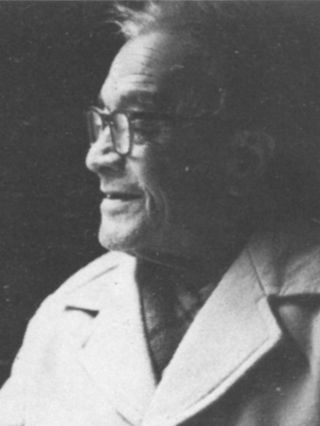
Chandra Man Singh Maskey was a Nepalese artist who was one of the leaders in the development of contemporary art in Nepal in the early 20th century. Maskey spearheaded the trend of creating art using new techniques for its aesthetic value, and introduced a new style in the milieu of traditional art which is essentially religious and follows descriptions laid down in ancient texts.
